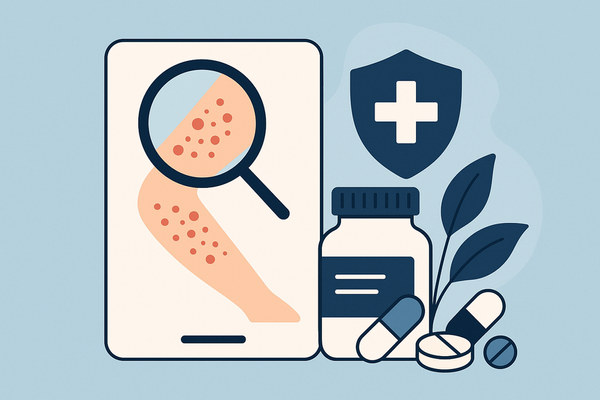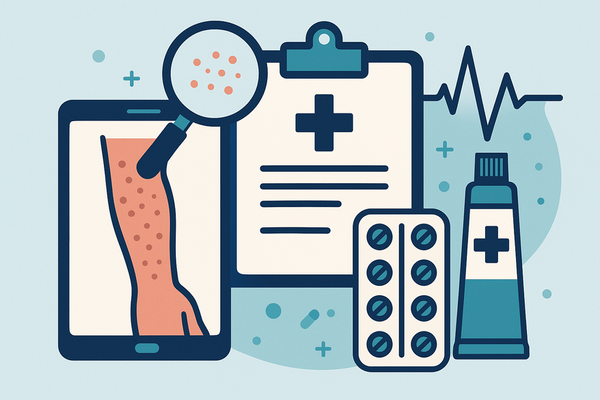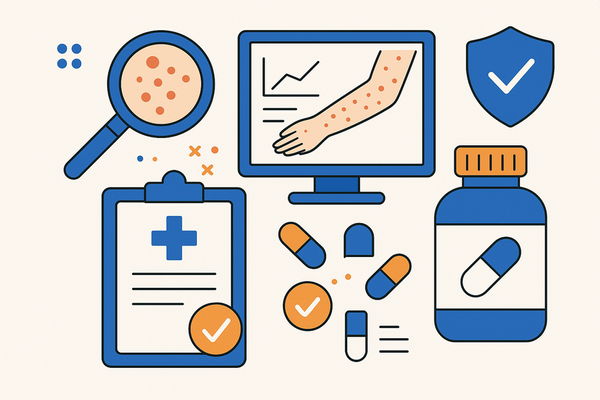Understanding the Sleep Impact on Skin Health
Explore how sleep impact on skin health plays a role in repair, barrier strength, and aging. Discover tips to enhance skin through better rest and stress management.
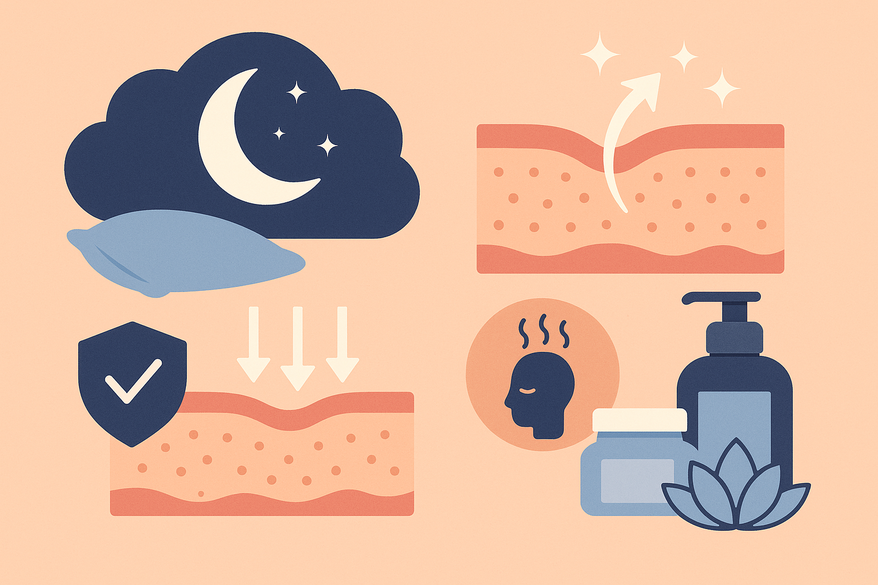
Estimated reading time: 7 minutes
Key Takeaways
- Quality sleep is essential for nighttime skin repair and collagen synthesis.
- Stress-driven cortisol can disrupt the skin barrier, increase inflammation, and trigger breakouts.
- Use gentle, barrier-repair skincare (ceramides, fatty acids, antioxidants) to combat rashes.
- Optimize your sleep environment and practice mindfulness to break the sleep–stress–skin cycle.
- Track your progress with tools like Rash Detector to monitor improvements over time.
Table of Contents
- Introduction
- The Science Behind Sleep and Skin Health
- Role of Melatonin
- Visible Signs of Sleep Deprivation
- The Role of Stress in Skin Health
- Managing Rash and Skin Irritations
- Practical Tips for Optimizing Sleep and Reducing Stress
- Conclusion
- FAQ
Introduction
Sleep impact on skin health refers to how the amount and quality of your rest affect your skin’s repair, barrier strength, aging, and appearance. Poor sleep elevates stress hormones via HPA-axis activation, which impairs the skin barrier and delays natural repair. High stress then worsens sleep quality, creating a loop that can trigger or deepen issues like rashes and breakouts. Understanding these links helps you improve rest and manage stress for better skin wellness.
The Science Behind Sleep and Skin Health
Your skin goes into repair mode while you sleep. The body’s clock—your circadian rhythm—tells skin cells when to renew. At night, keratinocytes (skin surface cells) and fibroblasts (collagen-makers) work overtime.
- Fast-track epidermal renewal in deep sleep (NREM).
- Boost DNA repair for UV-damaged cells during REM.
- Strengthen barrier lipids to lock in moisture.
Quality sleep increases collagen synthesis, which keeps skin firm and resilient. Poor rest slows collagen production, leading to fine lines and sagging.
Role of Melatonin
- Acts as an antioxidant, neutralizing free radicals.
- Modulates the immune system to calm inflammation.
- Aids dermal fibroblasts in reducing oxidative stress.
Visible Signs of Sleep Deprivation
- Dull skin: slowed microcirculation hinders nutrient delivery.
- Premature aging: more matrix metalloproteinases break down collagen.
- Dark circles & puffiness: poor lymphatic drainage under eyes.
- Dryness & loss of elasticity: higher transepidermal water loss (TEWL).
The Role of Stress in Skin Health
Stress triggers the HPA (hypothalamic–pituitary–adrenal) axis. Here’s how it works:
- Hypothalamus releases CRH (corticotropin-releasing hormone).
- Pituitary gland secretes ACTH (adrenocorticotropic hormone).
- Adrenals pump out cortisol, the primary stress hormone.
Cortisol’s Dermatologic Effects:
- Pro-inflammatory cytokines (IL-6, TNF-α) rise, causing redness and swelling.
- Barrier lipids get disrupted, making skin drier and more sensitive.
- Excess cortisol ups sebum production, leading to acne flares.
Chronic stress shortens deep sleep, cutting nocturnal skin repair, and poor sleep boosts cortisol further, feeding a loop of inflammation and barrier breakdown. This cycle can worsen eczema, psoriasis, acne, and rashes, creating visible flare-ups (stress-related rash triggers).
Managing Rash and Skin Irritations
Common stress- and sleep-related rashes include:
- Eczema (atopic dermatitis): chronic itchy inflammation, barrier damage.
- Hives (urticaria): sudden mast cell histamine release, wheals and itching.
- Psoriasis flares: rapid skin cell growth creates red, scaly plaques.
Physiological Processes Behind Stress-Induced Rashes:
- Stress → mast cell degranulation → histamine release → vasodilation, redness, itch.
- Sleep loss → lower ceramide levels → greater TEWL → easier irritant/allergen penetration.
General Rash Management Guidelines:
- Tackle root causes:
- Prioritize sleep hygiene and stress reduction. Keep a sleep diary to identify patterns.
- Gentle cleansing: Use fragrance-free, pH-balanced cleansers. Avoid harsh sulfates and alcohols.
- Barrier repair: Moisturizers with ceramides, fatty acids, cholesterol. Humectants like hyaluronic acid to lock in moisture.
- Topical anti-inflammatories: Short-course low-dose hydrocortisone under doctor’s advice.
- When to seek help: Rash lasting >2 weeks or signs of infection.
Practical Tips for Optimizing Sleep and Reducing Stress
Sleep Quality Strategies
- Consistent Schedule: Go to bed and wake up at the same time daily.
- Ideal Environment: Darkness (<10 lux), temperature 18–22 °C, noise under 30 dB.
- Pre-Sleep Routine: No screens 1 hour before bed, limit caffeine 6 hours prior, avoid heavy meals close to bedtime.
Stress Management Techniques
- Mindfulness Meditation: Practice 10 minutes of present-moment awareness.
- Regular Exercise: 150 minutes/week of moderate aerobic activity, scheduled earlier.
- Balanced Lifestyle: Social support and relaxing hobbies (journaling, reading).
Complementary Skincare Routine
- Evening cleansing with gentle, soap-free formulas.
- Barrier-repair products containing ceramides and fatty acids.
- Antioxidant serums (vitamin C or E) to neutralize free radicals.
- Nighttime occlusive balms or sheet masks for hydration and repair.
For comprehensive daily rash monitoring and to see how your skin responds to improved sleep, consider using an AI skin analysis tool like Rash Detector. It provides instant insights from your photos, helping you track changes over time.
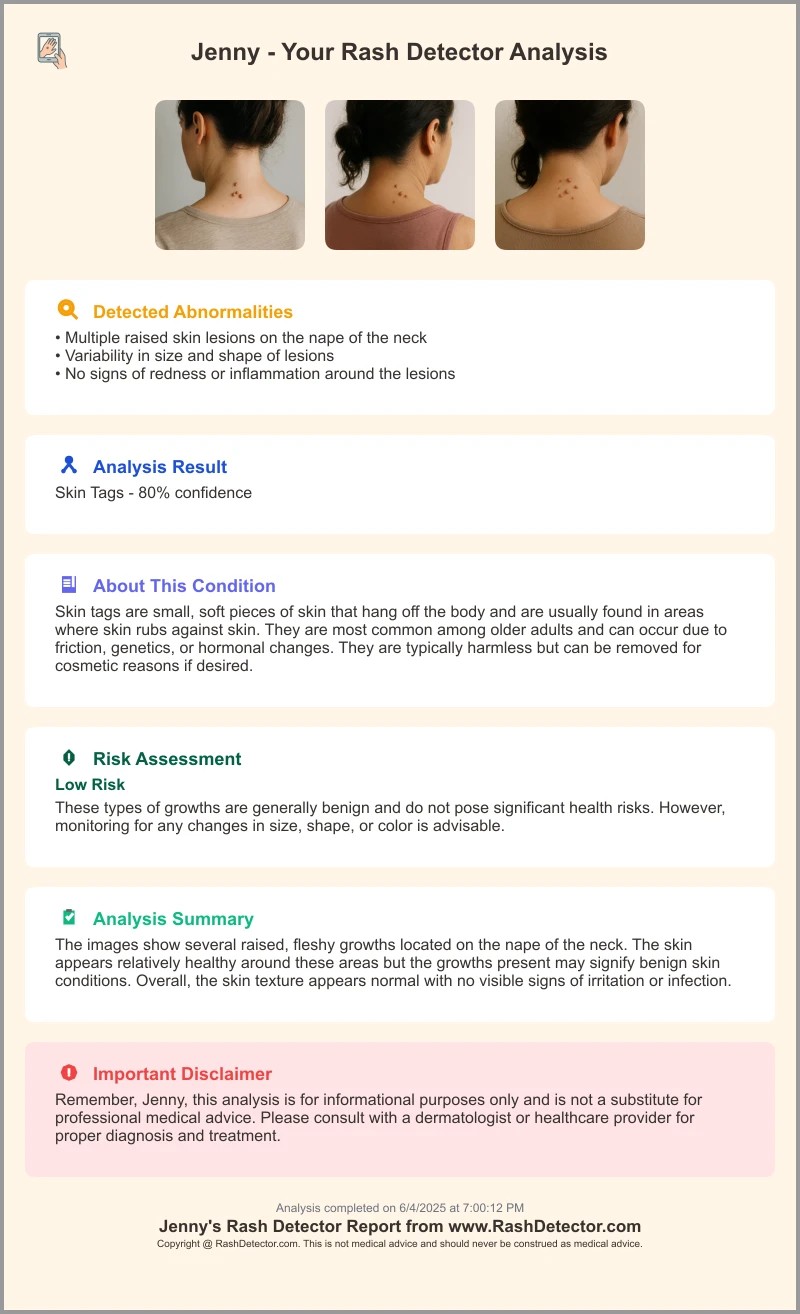
Conclusion
Sleep impacts skin health profoundly. Quality rest and stress management allow your skin to renew, strengthen its barrier, and fight aging and inflammation. Key steps:
- Prioritize consistent sleep schedules and a calm bedroom.
- Use mindfulness and exercise to keep stress in check.
- Adopt gentle, barrier-supportive skincare with antioxidants and ceramides.
Track your sleep patterns, note skin changes, and implement these habits daily. Better sleep and lower stress equal healthier skin.
FAQ
How does lack of sleep accelerate skin aging?
Insufficient sleep reduces collagen synthesis and barrier repair, leading to fine lines, loss of elasticity, and increased matrix metalloproteinases that degrade existing collagen.
What quick steps can I take to prevent stress-induced breakouts?
Practice deep-breathing exercises, maintain a gentle skincare regimen, and ensure you get at least 7 hours of quality sleep to regulate cortisol and sebum production.
Which ingredients are best for barrier repair?
Look for ceramides, fatty acids, cholesterol, hyaluronic acid, and soothing agents like niacinamide to rebuild and maintain the lipid barrier.
When should I consult a dermatologist about a rash?
If a rash persists beyond two weeks, shows signs of infection (redness, warmth, pus), or severely impacts your quality of life, seek professional evaluation promptly.


